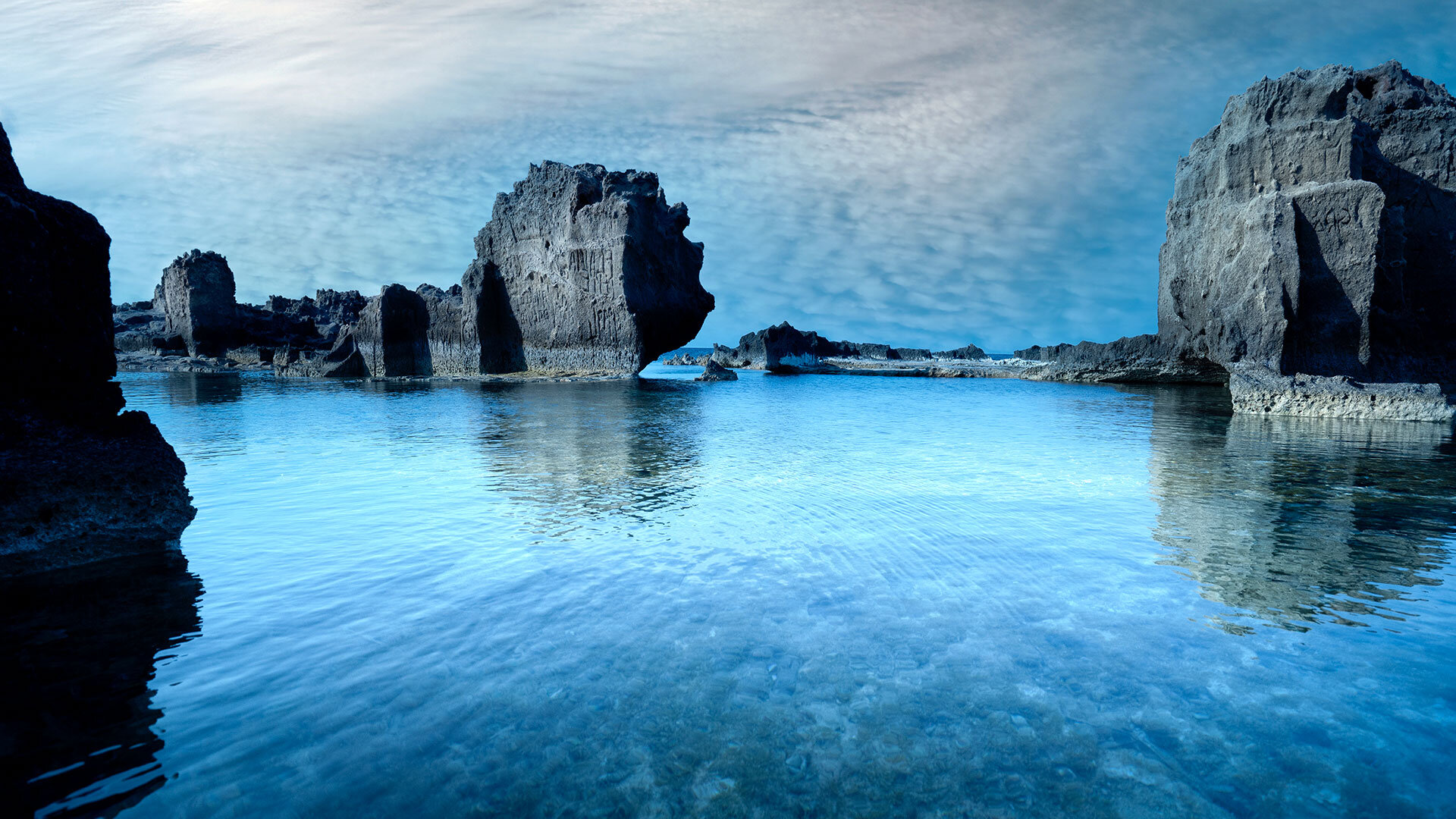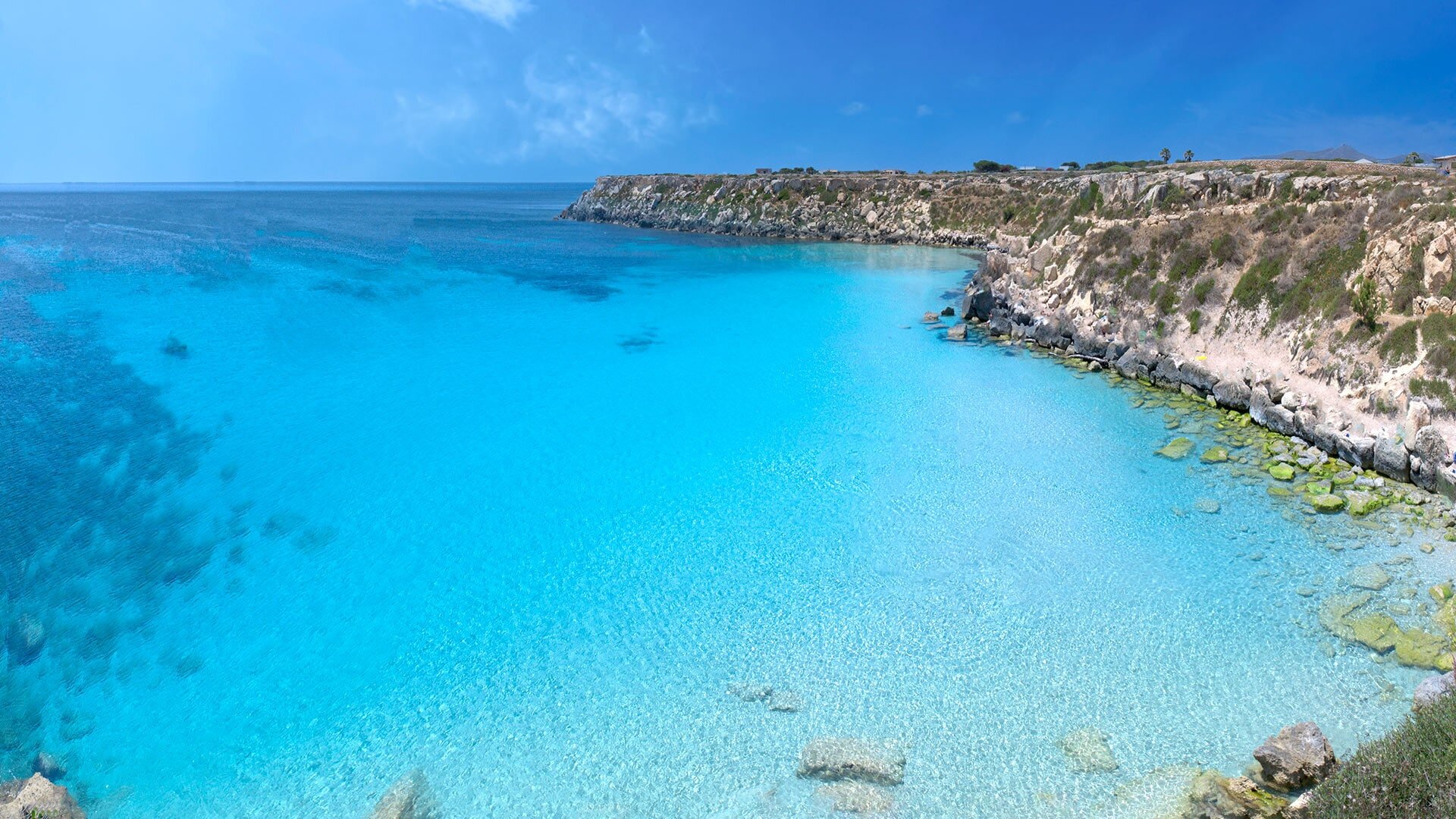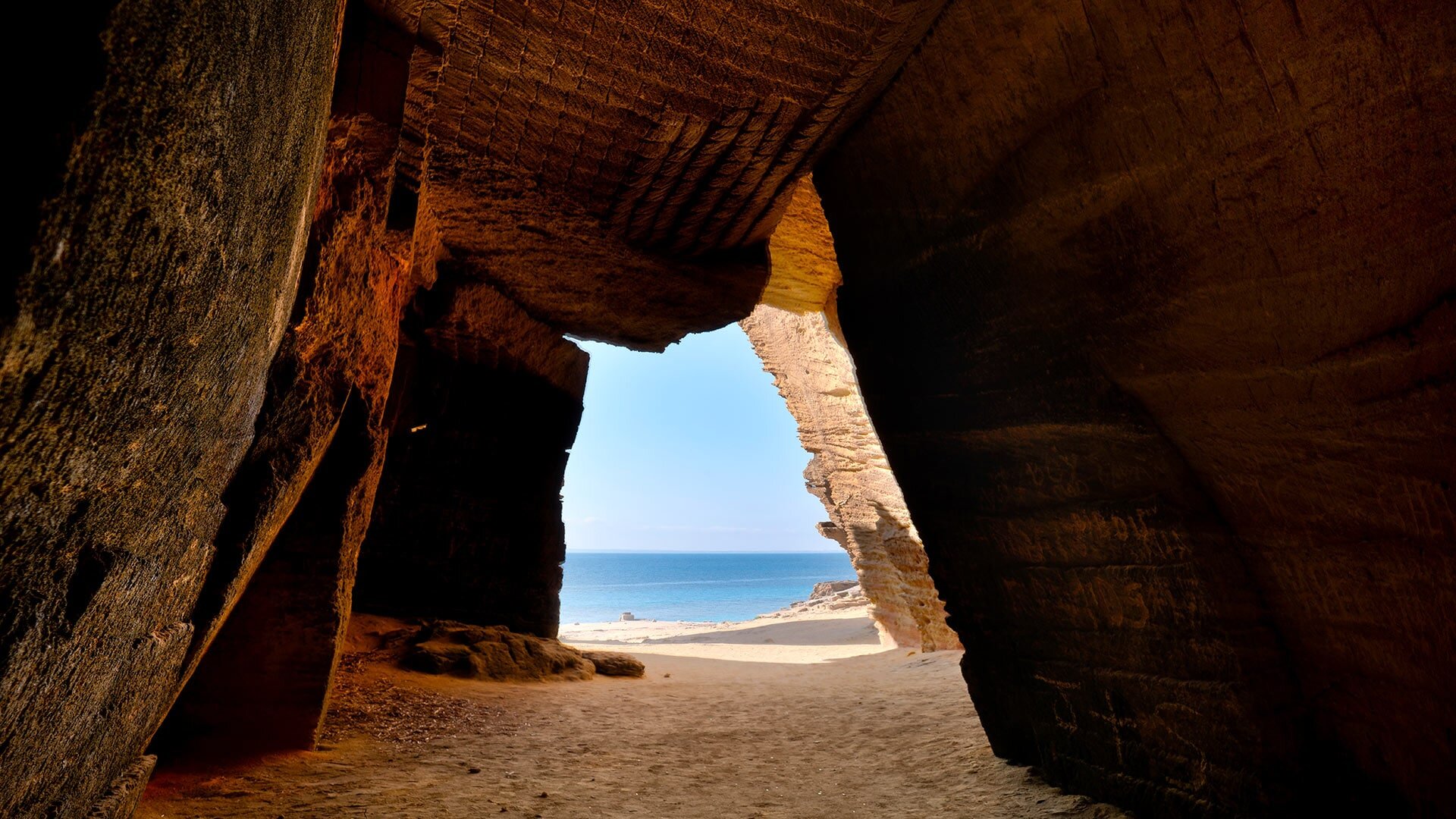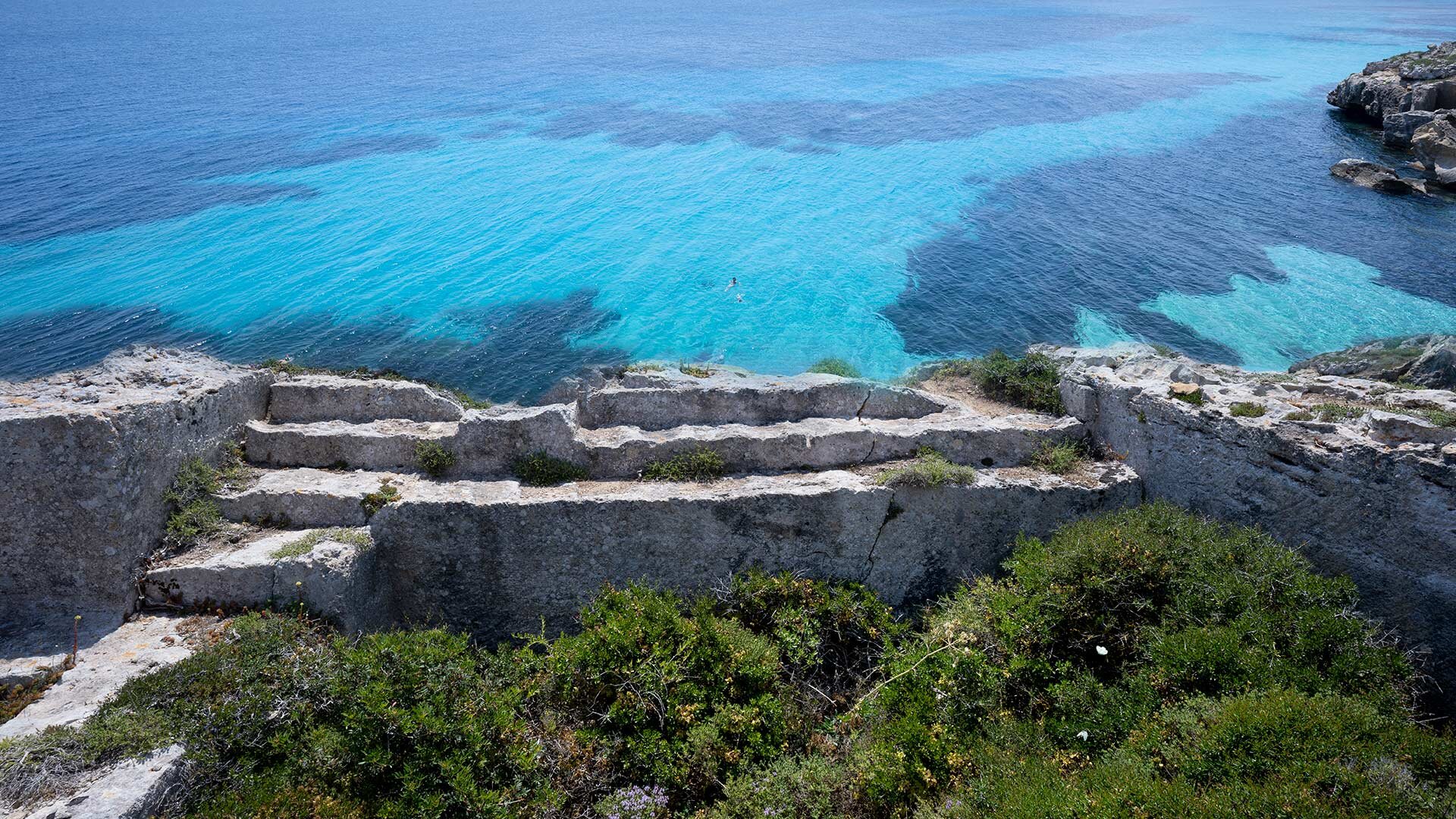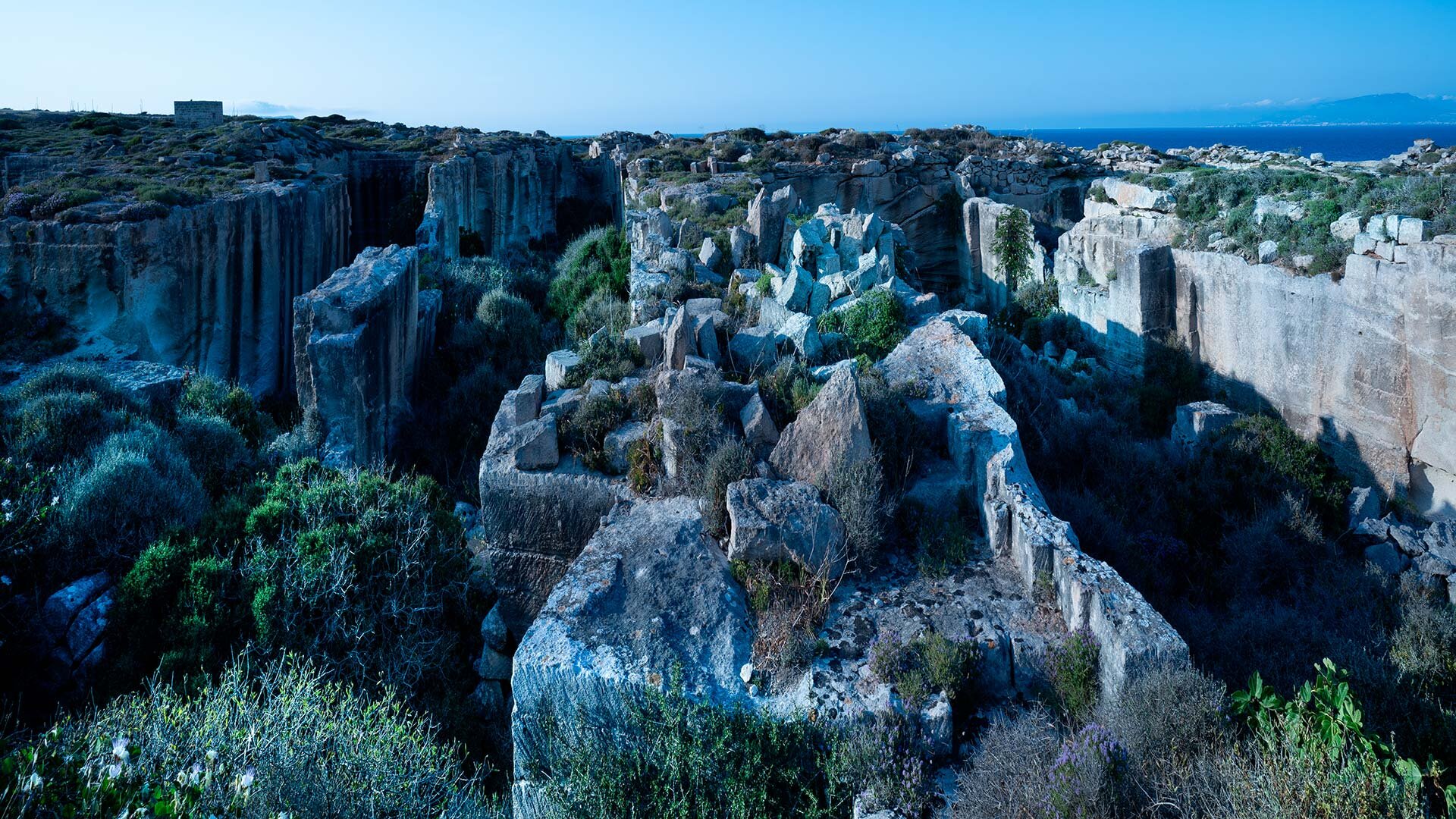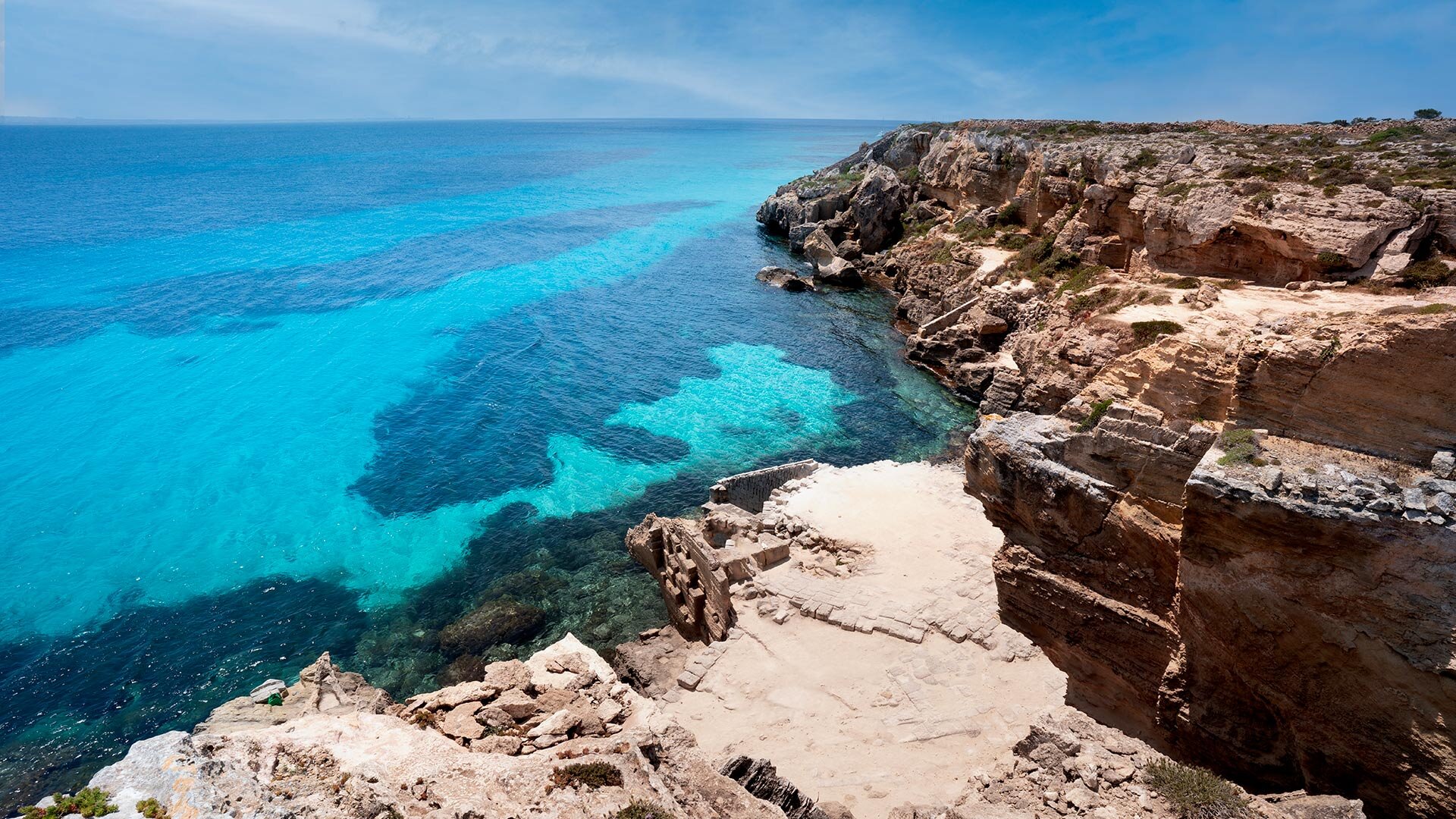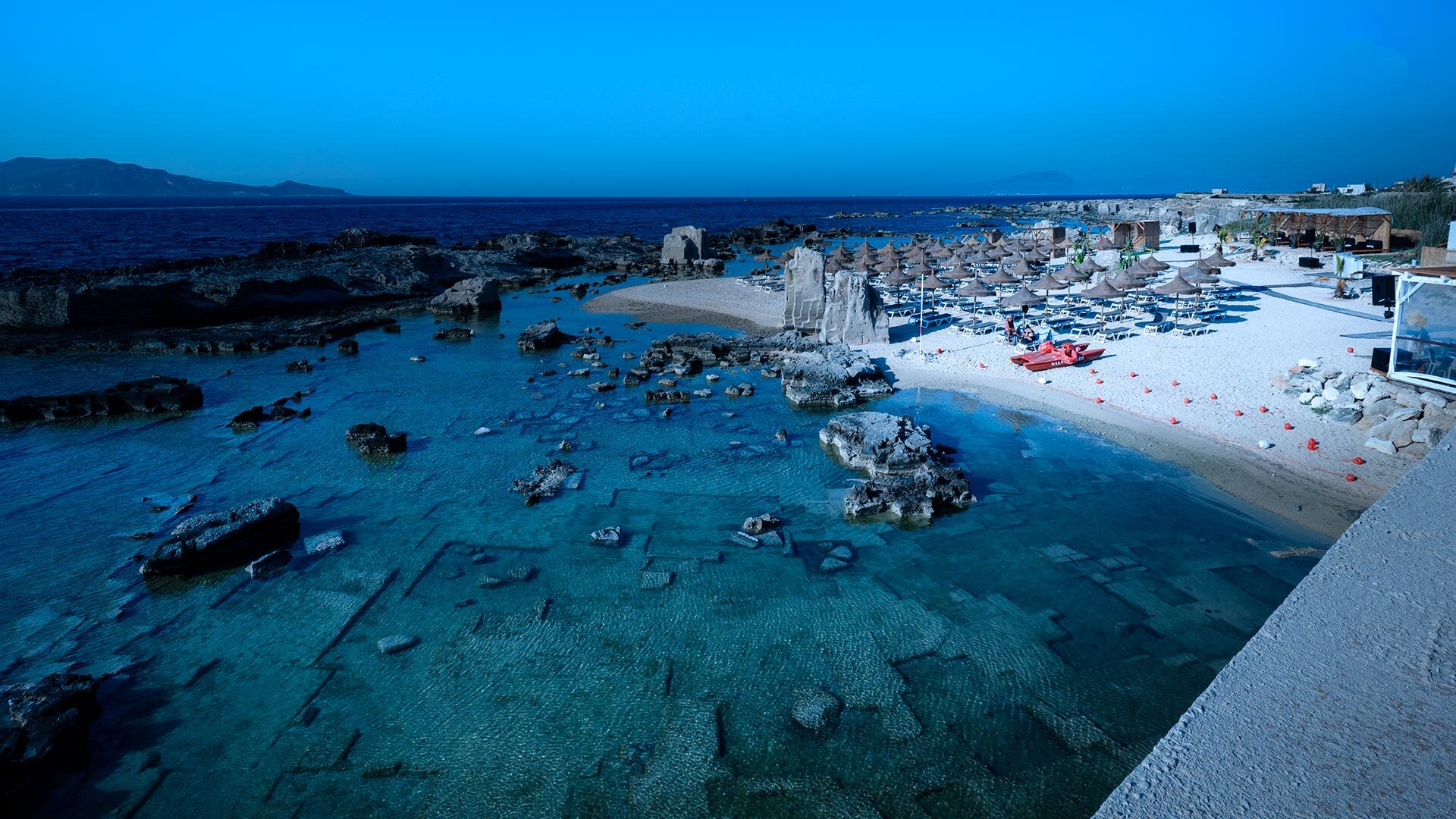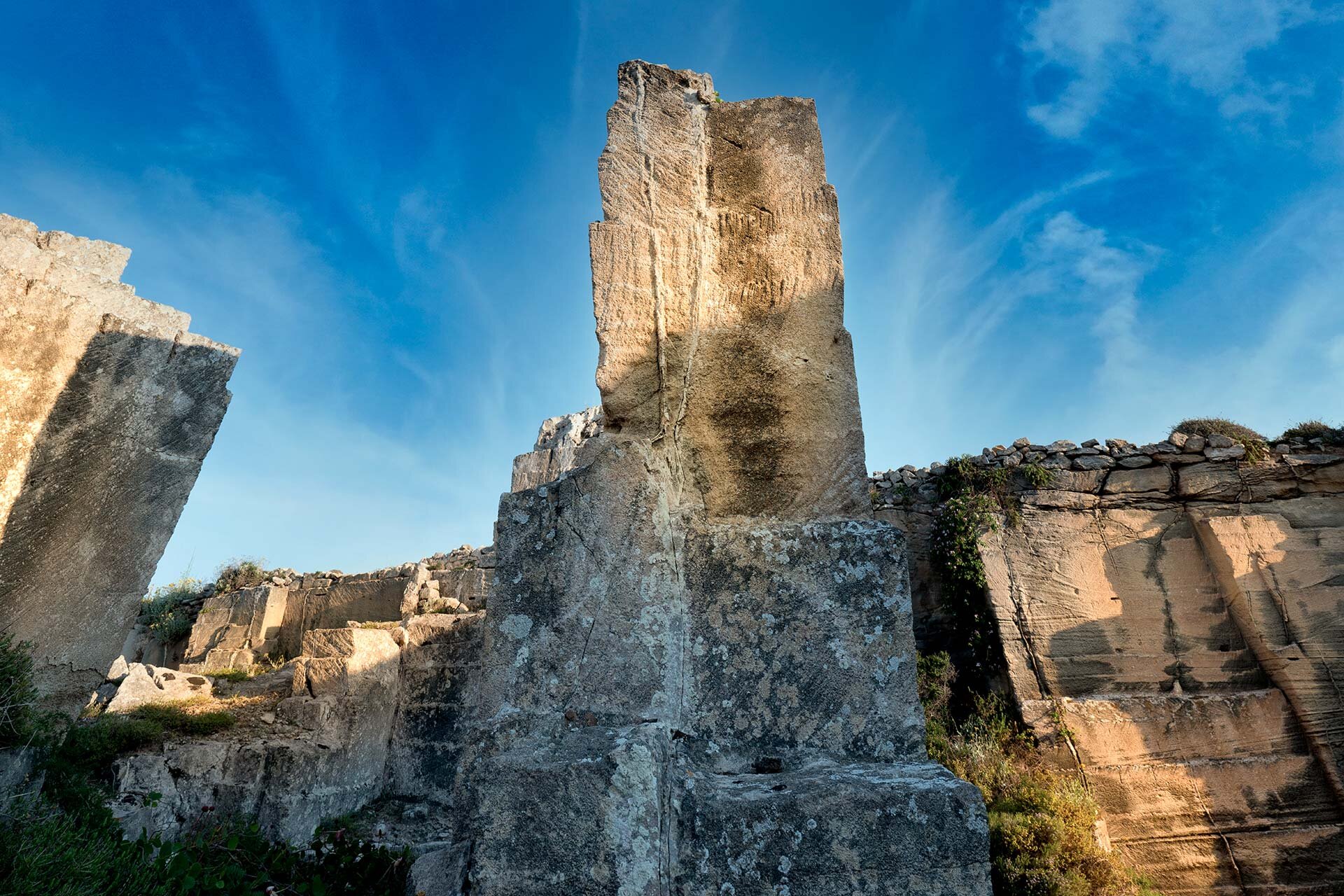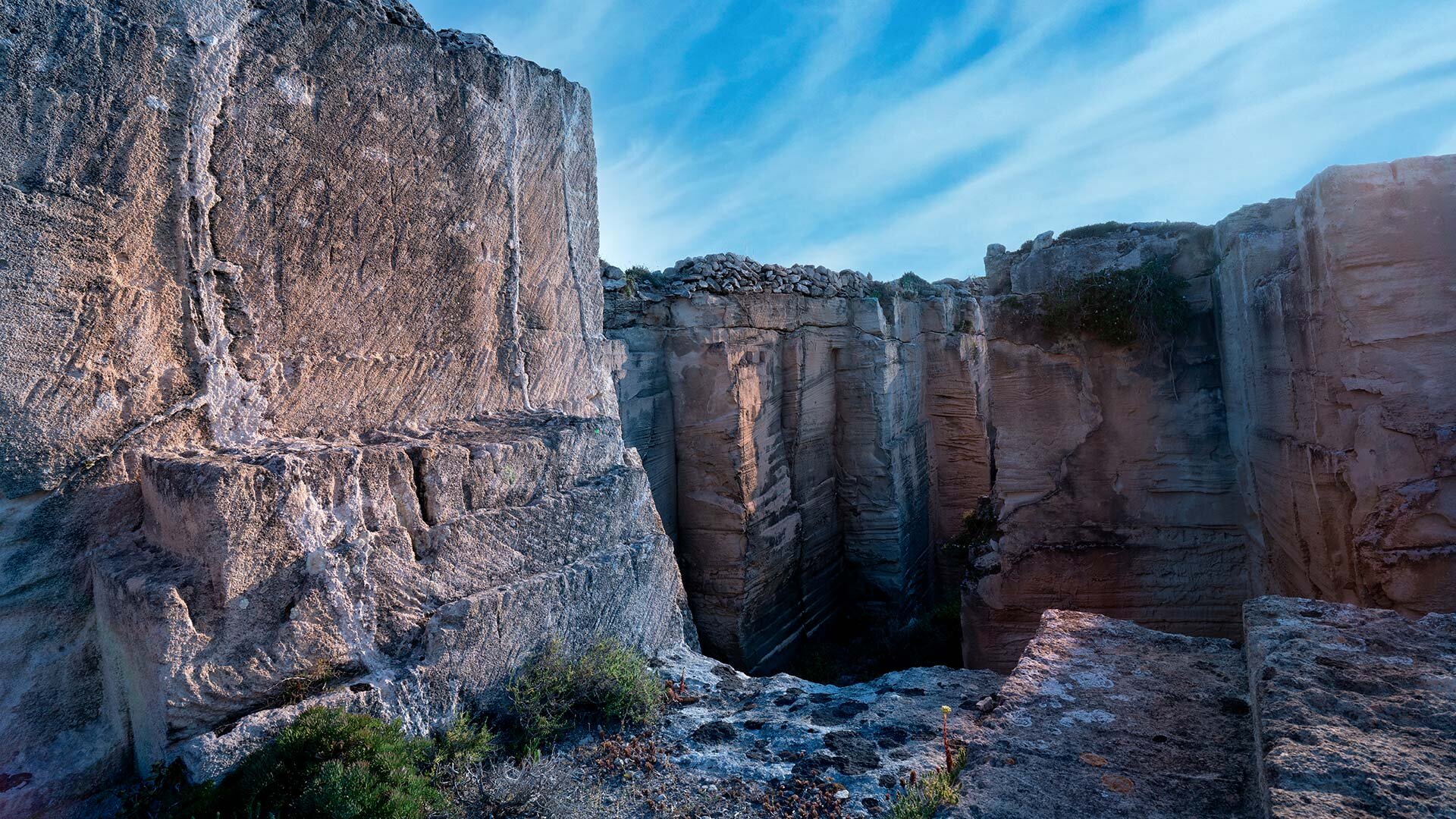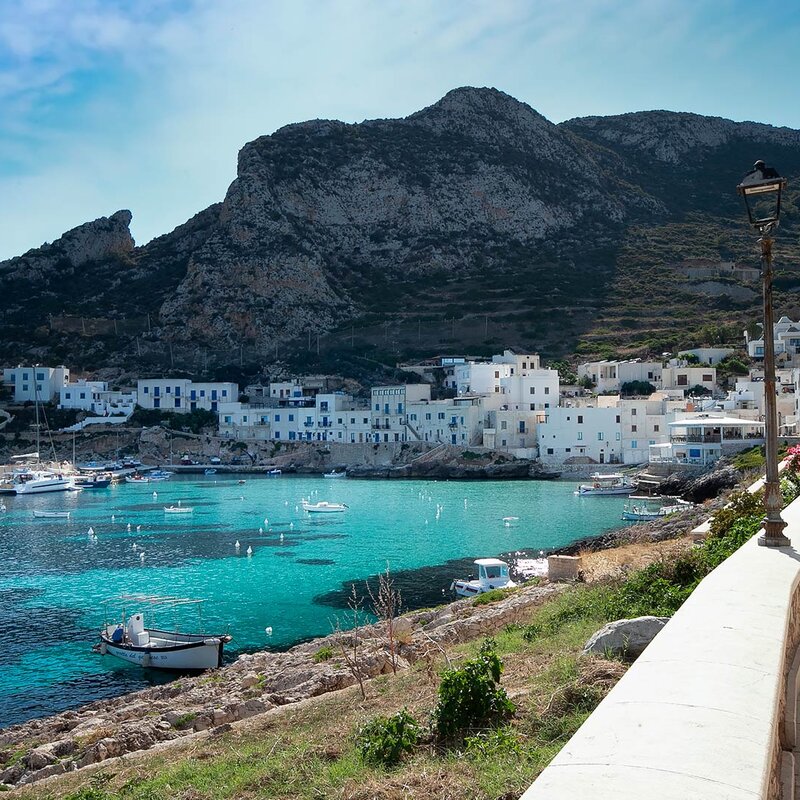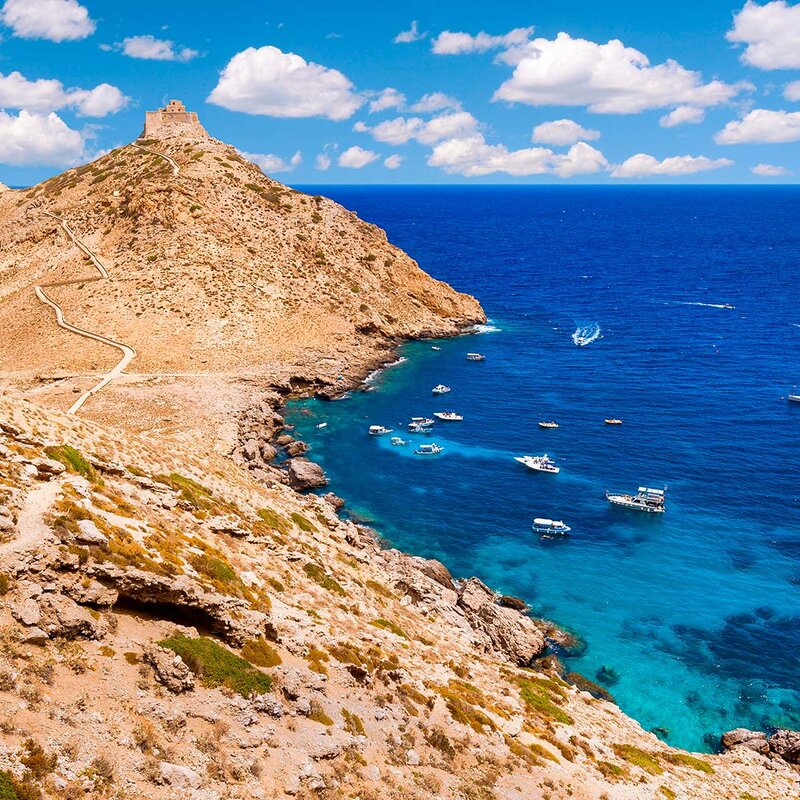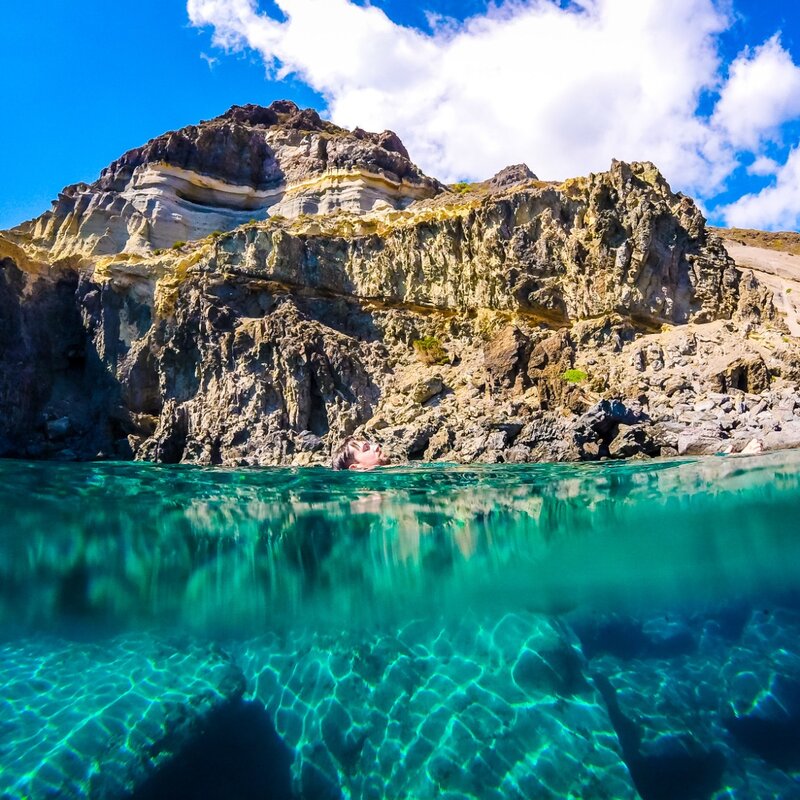Islands
Favignana
Its bare landscape stands out between the blue of the sky and its sea, and its plains, especially the eastern one, make it easy to explore the island by bicycle. But Favignana is also history and culture in an exceptional landscape: from the Castle of Santa Caterina that dominates the island, to its archaeological area par excellence, at Cala San Nicola, one of the first landings of the island in the Punic era, which testifies to the presence of a plant for the processing of fish and the production of garum and, probably, of a nymphaeum of Roman age, or, still as its testimonies of the necropolis, the late-antique and Byzantine ones along the north-eastern side of the mount of Santa Caterina, together with the ancient testimonies of the past at Grotta del Pozzo, hypogeum of paleo-Christian age. In the island the archaeology melts with the history and the local traditions, but also with the industrial archaeology, in the ancient tuna-fishing factory of the Florios or in the hypogeum gardens, realized in the ancient quarries of tuff (pirrere), ancient extractive activity that has also marked the “design” of the coasts, where there are splits invaded by crystalline waters.
While the elegance of Palazzo Florio, welcomes visitors just landed at the port, in the small fishing village that tells the articulated history of the so called “butterfly island” with its houses, its streets.
At the naturalistic level, the island, called “the big butterfly on the sea”, is an oasis of nature: caves, beaches, coves, caves populated by gardens or lapped by the water and a breath-taking sea to live intensely. In fact, Favignana is the largest of the islands of the largest marine protected area in Europe surrounded by the sea. On its shores there is a succession of beautiful beaches and coves. In Favignana is easy to get in touch with nature in many different ways. Its water depths and beautiful coves are a destination for snorkelling enthusiasts, but the island, thanks to its geo-morphological conformation, allows you to enjoy almost the entire coastline, with large sandy stretches alternating with rocky ones in the southern part, while the northern one is rocky, characterized by flat rocks, evidence of the ancient practice of extraction of calcarenite.
In this, the most “worldly” of the islands of the archipelago, are above all the central streets of the town – between piazza Madrice and piazza Europa – to welcome the numerous restaurants where to have dinner or an aperitif. Obviously, the menus are rooted in the fertile waters of the sea: the daily fresh catch is an excellence and here it is possible to find the most suitable local recipes to exalt the flavours.
#1A dip in Cala Rossa
#2In the footsteps of ancient and recent history at the Ex Stabilimento Florio delle Tonnare Di Favignana e Formica
#3The delicious busiate with fish sauce
